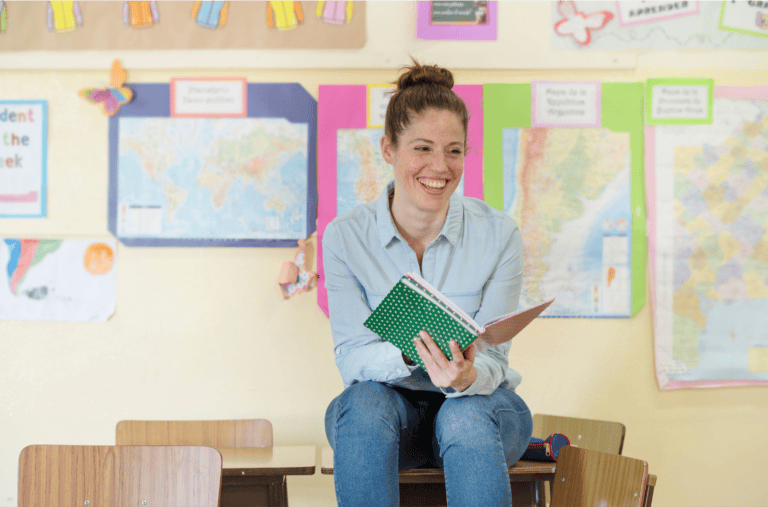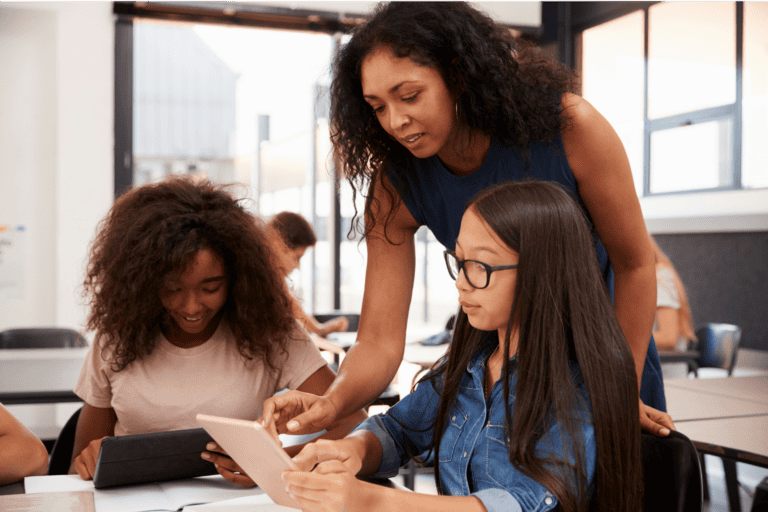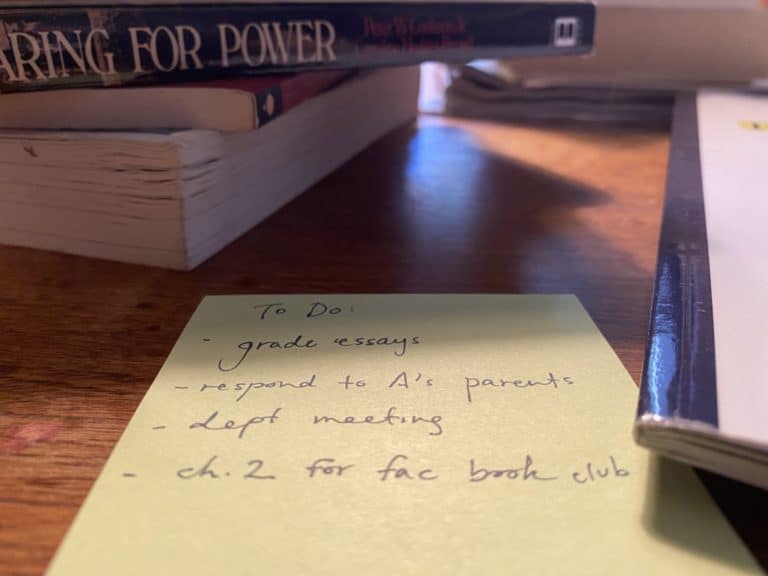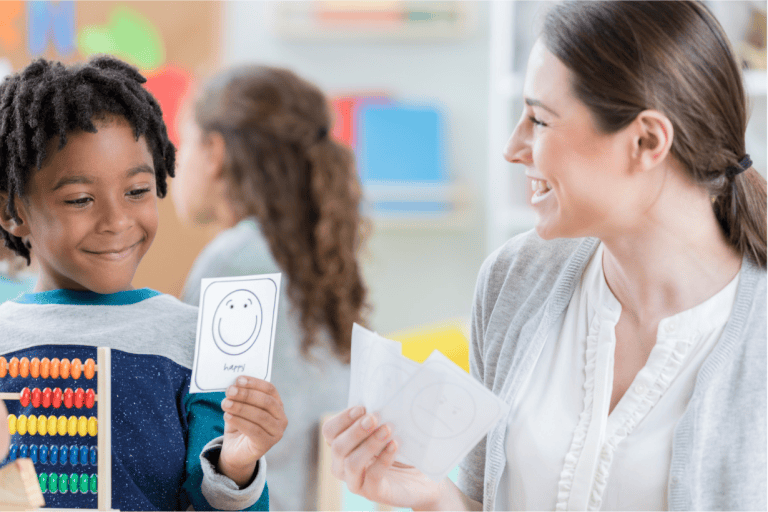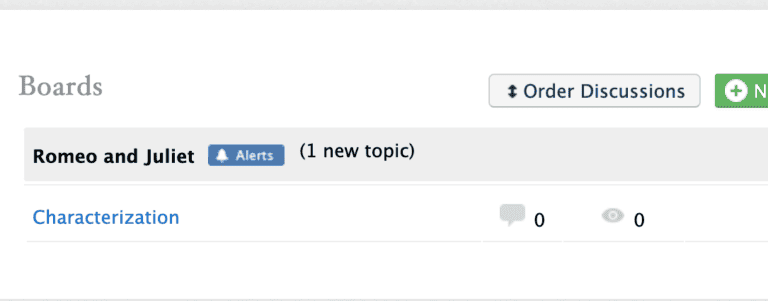Breaking It Down: The “L” in R.E.A.L., Part 1
R.E.A.L.® Discussion is a professional development program that equips faculty to teach, measure, and celebrate discussion skills – which students use in the classroom, in the cafeteria, on the court, and, even, at the grocery store (said one sixth grade girl) and on dates (shared a ninth grade boy)!
The system is based on the four R.E.A.L.® Skills, an acronym that breaks the art of discussion into teachable and transferable skills for a generation of students who would rather text than talk. The four skills are Relate, Excerpt, Ask, and Listen – and the program teaches students to practice, master, and reflect on each.
In this series, we’re walking you through each R.E.A.L.® skill. Today, we’re analyzing L – the skill of Listening – more precisely, listening visibly.
Listening: Skills and Habits
We all know that today’s students are surrounded by distractions. In a screen-bound world, attention spans are down, and addiction to video games and social media is up. And while researchers debate which social skills kids can develop through a screen (there are some!), it’s clear that active listening and body language are two skills with which today’s kids struggle.
We see over and over that kids from various schools and grade levels struggle to listen deeply – the first step in truly engaging different viewpoints – and to read and give non-verbal cues. The good news? Our research and methods show that active, visible listening is teachable – we just have to teach it!
Learning to listen – and to listen visibly – is one of the most challenging aspects of a dynamic, productive, and respectful discussion. Our program teaches it in grades 2 (“Listening with your Body”) through 10 (“Make Listening Visible”), and as R.E.A.L.® students come to learn, the key to an effective conversation does not just lie with the content of the ideas being spoken: it also hinges on the feedback speakers receive, both verbally and non-verbally. Kids today may feel hesitant about engaging in class discussions if they feel their peers aren’t listening to them or, worse, are judging them for what they say. Our research shows a clear majority of students do not think that “When I speak, I think my classmates listen” at the beginning of the year.
On the flipside, if students know – and, furthermore, can see – that their peers are listening to them, engaging with their points, and reacting with respect and encouragement, they can jump that hurdle more easily. That both helps them develop the confidence they need to speak up (in and outside of class), and it produces a more active, more dynamic discussion.
Active, visible listening is core to a good discussion, but it doesn’t come naturally to every learner. That’s why the R.E.A.L.® process makes it explicit with these three non-verbal skills:
1. A special hand signal that conveys agreement
When students begin using R.E.A.L.®’s hand signal to convey agreement with a classmate, they may initially feel foolish. Over time, though, the sign becomes second-nature: our teachers even report seeing it permeate the hallways and athletic fields. We think of it as a “visual like button.”
This hand signal is a visible way to tell a speaker “I agree with you” without adding extraneous commentary that can slow discussion. What’s more, it gives the speaker an enormous confidence boost to see a flurry of hands indicating agreement.
“I’ve listened a lot more, adding onto others’ opinions instead of just stating my own. I’ve also been using the non-verbal cues to let my classmates know they have been heard and understood by me.
– 9th grader
2. A pass-off system that decides who should speak when
In many classrooms, the same few loud voices dominate every discussion. That can make it difficult for more introverted or reserved students to share their perspectives – and it also doesn’t teach the more extroverted students the valuable skill of listening.
The R.E.A.L. pass-off system encourages students to hold up a finger to indicate the number of comments they’ve already made during discussion. When the current speaker is ready to “pass off” to the next person, they’re encouraged to find the person who has spoken the least to ensure equitability.
3. An expectation of eye contact
Phones, computers, and other distracting devices are not allowed during R.E.A.L. ® discussions. Students are encouraged to keep both hands on the table, so speakers can clearly see that all listeners are engaged in the conversation, and to make eye contact with – or, if not culturally appropriate, to look in the general direction of – the speaker. This is a sign of respect for the speaker and visible, tangible evidence of listening.
“The students are more comfortable speaking in class, but they are more comfortable they will be heard, too. The REAL nonverbal cues create an invitation to actively engage with each other. This builds trust.
– 9th grade Teacher
Once students have mastered the skill of visible listening, they can begin to employ important listening habits that help advance the discussion. Stay tuned for part II of this post, where we’ll share how the R.E.A.L. ® program teaches students both to listen to facilitate and to listen to give, get, and grow through feedback.
“I have learned how to listen more to others. I learn more then too. Everyone deserves to have their voice heard.
– 6th grader
Want to learn more about Listening and R.E.A.L.®’s other three foundational skills? Reach out to our team for a conversation today.


